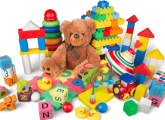Laura Moore shares five essential resources that will assist with communication and language development in your setting…
Communication and language underpin all other areas of learning. As practitioners, it’s vital that we support communication and language development through a wide range of key experiences and play opportunities.
Below are my top five communication and language development resources which I consider must-haves when enabling children to become effective communicators.
Reading to children frequently and sharing high-quality texts cannot be underestimated.
When children are exposed to a variety of books, such as fiction and non-fiction, rhymes and poems, they are introduced to new words, concepts and themes. These can extend their vocabulary, support the development of language structure and introduce them to unfamiliar topics.
Be sure to have a diverse range of picture books throughout your environment. They should be easily accessible to all and reflective of both your cohort and society.
Engaging children actively in books or songs through the use of these sacks provides opportunities for them to embed new vocabulary and explore language concepts.
Creating these resources doesn’t need to be expensive or tedious. You can get creative and make things to match objects, themes or key characters from the book. Alternatively, build up your collections over time from jumble sales or charity shop finds.
Store them in a zip lock bag, along with the book or song card. Include them within your continuous provision so children can access them on their own or with their peers.
These are items that don’t have one designated purpose and so can be used in a range of ways. Providing children with these resources means they don’t need to limit their play, follow any specific instructions or have a set outcome.
As a result, children feel comfortable in their child-led play. They’re more likely to explore and use a rich range of vocabulary independently.
Offer things such as wooden peg figurines, natural materials in a tinker tray, loose parts and cardboard boxes. The list is endless. They are invaluable items for communication and language development and are often easily sourced around the home or in the natural environment.
These cubes are perfect for supporting communication and language development in a creative and imaginative way.
Each face of the die has a random image on it. When children roll numerous dice, they can make their own story to include the pictures displayed. This allows children to build their own tale, as bizarre as they wish.
Often children follow the story structure from familiar tales. You could start with ‘Once Upon a Time’ or use the theme of a favourite book as a guide to encourage them. Model the use of the storytelling dice initially by having a go yourself – it’s really fun!
When it comes to supporting communication and language development, our back-and-forth interactions with children from an early age are crucial.
Language-rich, quality conversations build children’s language effectively. So through our role as the adult, we need to ask key questions, comment on what they are doing and echo what they are saying by extending their sentences using new vocabulary.
I always include educators in my inspiring resources list. I feel it’s important for us to realise and remember the vital role we play in the lives of young children in our care. Be proud of the impact you have!
Laura Moore is an early years consultant. For more inspiration, follow Laura on Instagram at @lauraloveslearning.

Early years toys – Expressive arts toy-themed activities
Editors picks
